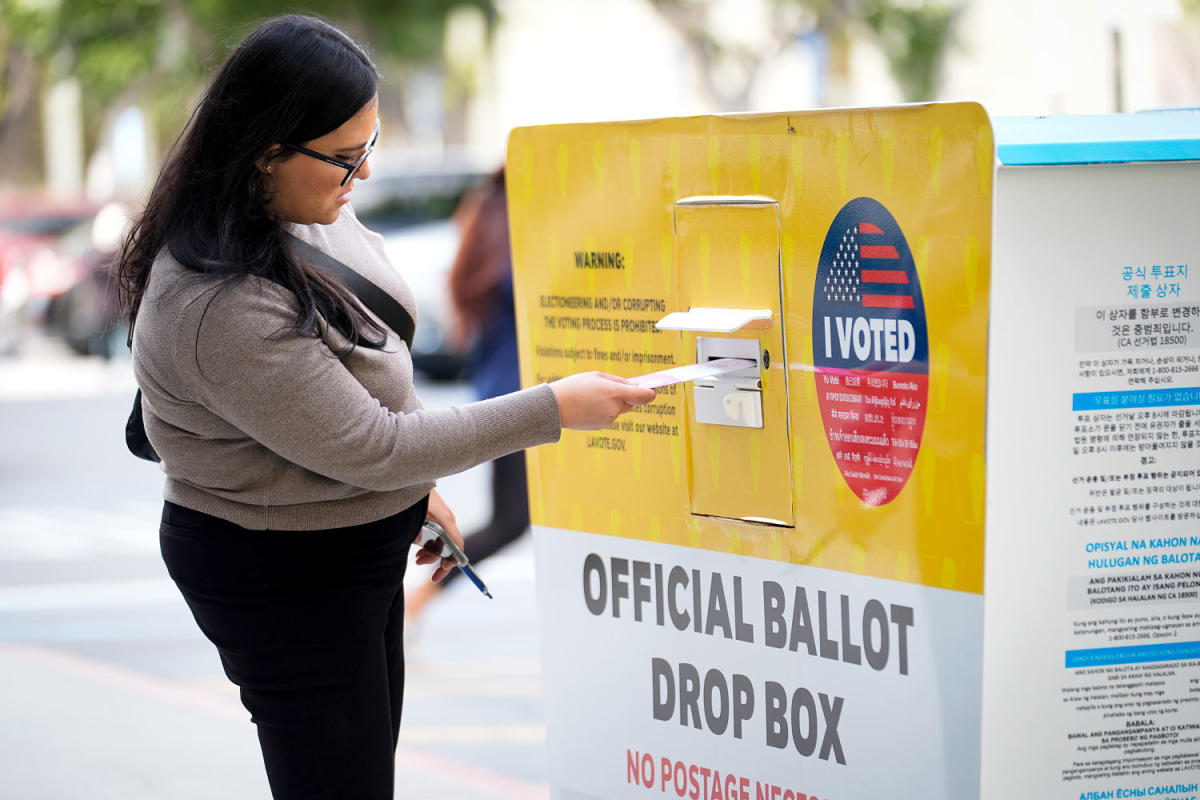COVID-19 is still raging—which any high-risk or immunocompromised person could’ve told you long ago—and right now, there’s a huge surge of infections across the U.S.
Infectious disease experts say it’s relatively unusual to see surges in the summer months, but due to the heat wave (or dome, depending on where you live), more people are congregating indoors to savor air conditioning and seek respite from soaring temperatures and humidity.
There are currently 39 states with growing or likely growing surges of COVID-19, and data from the Centers for Disease Control and Prevention (CDC) makes it look unlikely to see a decline anytime soon.
Related: A Startling New Study Found That 75% of Past COVID Patients May Suffer From This Heart Condition
“There is concern in the public health community that a summer spike in COVID-19 cases may occur as a result of the new FLiRT variants combined with less vaccine uptake and declining immunity in the community, as well as increased travel and indoor gatherings during the summer,” medical epidemiologist and board-certified pathologist Dr. David A. Schwartz, MD, MS Hyg, FCAP, tells Parade. “Laboratory research suggests that the current vaccines and immunity acquired from previous infection may not be effective in producing high levels of protection, especially among certain persons with risk factors such as those persons with underlying conditions, the immunocompromised and the elderly.”
Dr. Ashley L. Drews, MD, an epidemiologist at Houston Methodist, points out, “We have seen COVID surges every summer since the onset of the pandemic, but this one seems to be starting earlier in the summer than the previous summer COVID surges. We are likely seeing a surge right now as the most widely circulating variants, the FLiRT variants, have mutated and further evaded the immune system coupled with waning immunity in general. There was low uptake from the updated COVID vaccine in the fall of 2023.”
What’s more, while hospitalizations are low compared to the peak of the pandemic in 2020, they’re still going up compared to where they were in the spring.
“Emergency room visits for COVID-19 have increased over 14% from the week before,” Methodist Le Bonheur Healthcare infectious disease physician Dr. Shirin Mazumder, MD, says. “COVID-related hospitalizations have also increased by 25% from the previous week.
In fact, those numbers will likely increase even further when people travel for July 4 parties and long weekends—and these numbers don’t even take into account long COVID, which can linger for months or more in some patients and be really serious.
Here’s what to know about the current COVID-19 surge, what symptoms to look out for, how to stay safe and protect yourself and others.
What Is the Most Common Symptom of the June-July 2024 COVID-19 Surge?
Infectious disease experts and epidemiologists we spoke with agreed that the most common COVID symptom of the current surge is a sore throat.
“Unfortunately one of the most common COVID symptoms currently seems to be a sore throat with or without a mild fever,” infectious disease specialist Dr. Andreas M. Kogelnik, MD, PhD., tells us. “I say unfortunately because—of course—a sore throat can be attributed to many different causes.”
This is especially true for people who have seasonal allergies, making it easier to dismiss the symptom as a high pollen count versus a contagious infection like COVID.
Other COVID symptoms commonly being reported include:
-
Body aches
-
Chills
-
Congestion
-
Cough
-
Fatigue
-
Fever
Some good news? Loss of smell and taste, which were common symptoms of prior COVID strains, are now uncommon.
And a little more good news: “COVID symptoms have remained very consistent in the last couple of years,” Dr. Mazumder points out. “With the information available so far, there does not appear to be an increase in symptom severity as it relates to hospitalizations and death with the currently circulating strains.”
Related: The #1 Early COVID Sign Most People Miss, According to an Infectious Disease Expert
How Can You Protect Yourself From New COVID-19 Variants?
We can start by not ignoring that COVID-19 is still very much around, even if our governments want to pretend otherwise.
“COVID continues to steadily change and adapt around us,” Dr. Kogelnik says. “The current wave of COVID, which displays milder symptoms, and the general global exhaustion with COVID precautions from the height of the pandemic, is more than enough to leave many people skipping a simple hand wash and other protective measures which, in turn, allow a persistent virus to be more persistent.”
In addition to hand-washing (which you should be doing anyway!), masking, self-isolating and frequent testing can all help keep you and others protected from the current COVID surge.
Should You Get a COVID Booster to Protect Yourself From the Surge?
The answer to this will depend on when (or if!) you got the most recent COVID-19 booster, released last fall, and what your overall health looks like.
“Although there will most likely be an updated COVID-19 vaccine this fall, individuals over the age of six months who have not received the current booster should consider getting vaccinated,” Dr. Mazumder says. “People who are immunocompromised and those over the age of 65 are eligible to receive another booster dose of the vaccine even if they received one last fall. As long as it has been at least four months since their last vaccine, people in this category can get another booster. The COVID-19 vaccine helps to decrease the risk of severe disease, hospitalization and death. With an anticipated summer wave, now is a great time to get up to date on the COVID-19 vaccine.”
If you did get your booster last fall, you’re probably OK if you don’t have other pre-existing conditions or complication risks, infection disease physician Dr. Robert Salata, MD, says—but you should definitely roll up a sleeve for the next dose when summer ends. He notes, “There will be a new vaccine predominantly developed against predominantly circulating strains which should be available early this fall.”
Next, Here’s How Long COVID Is Contagious After You Get a Positive Test
Sources
Signup bonus from




